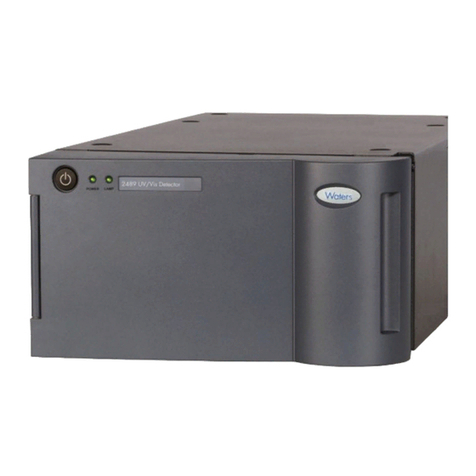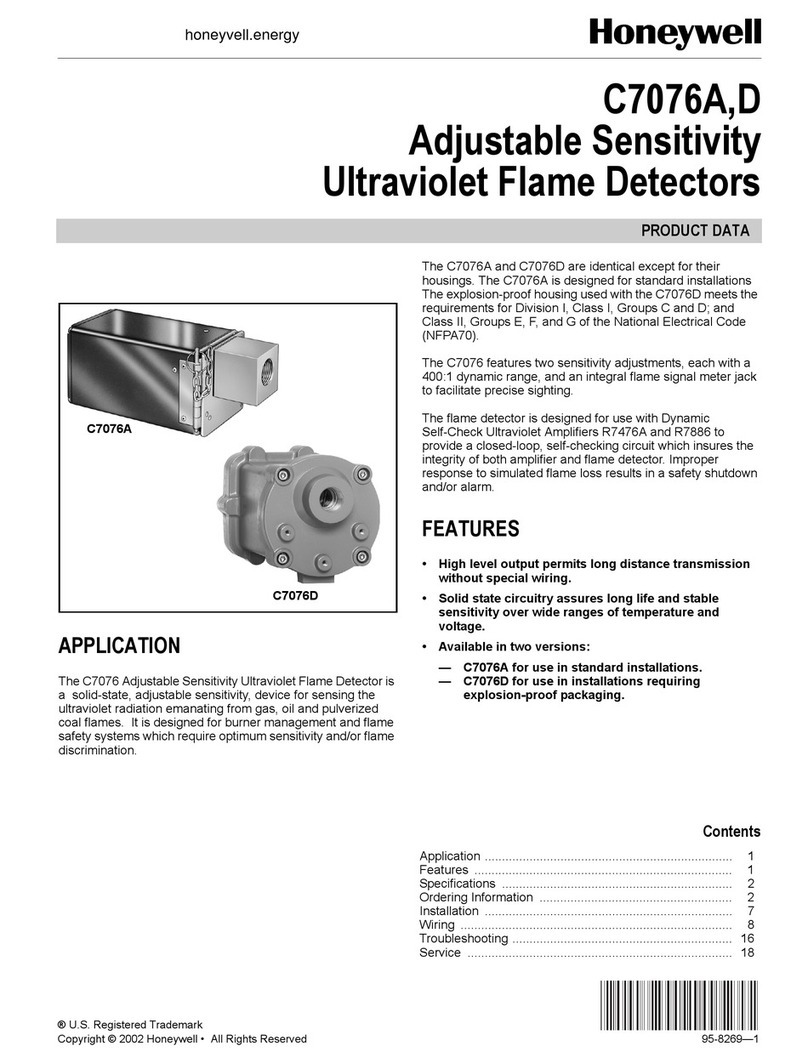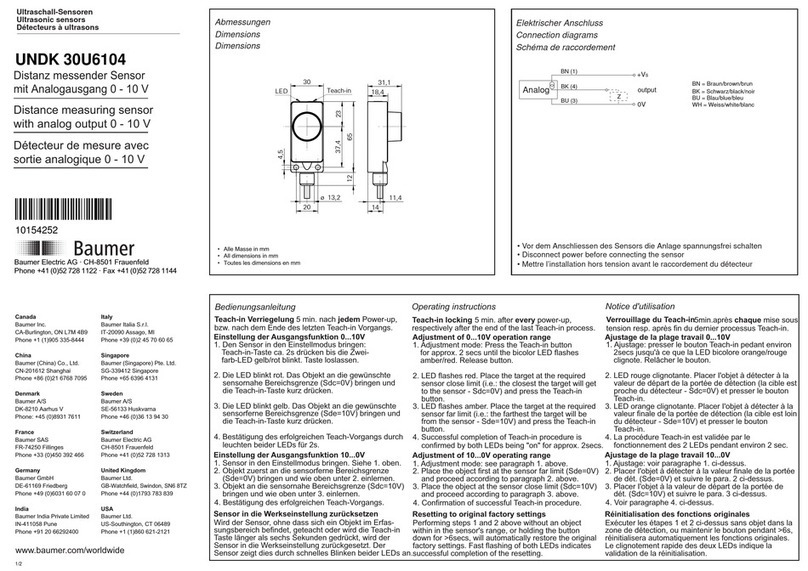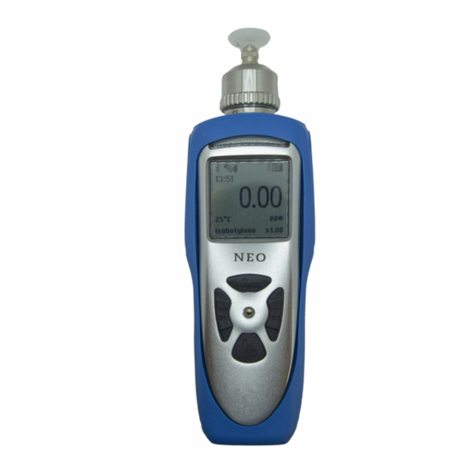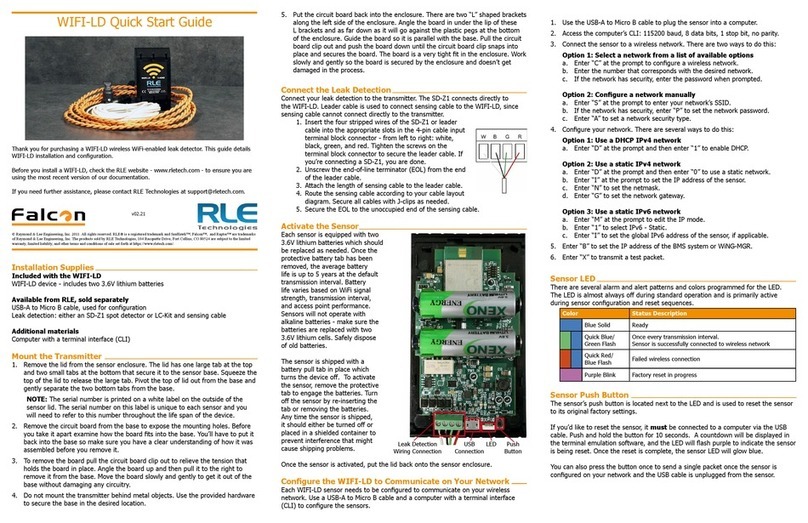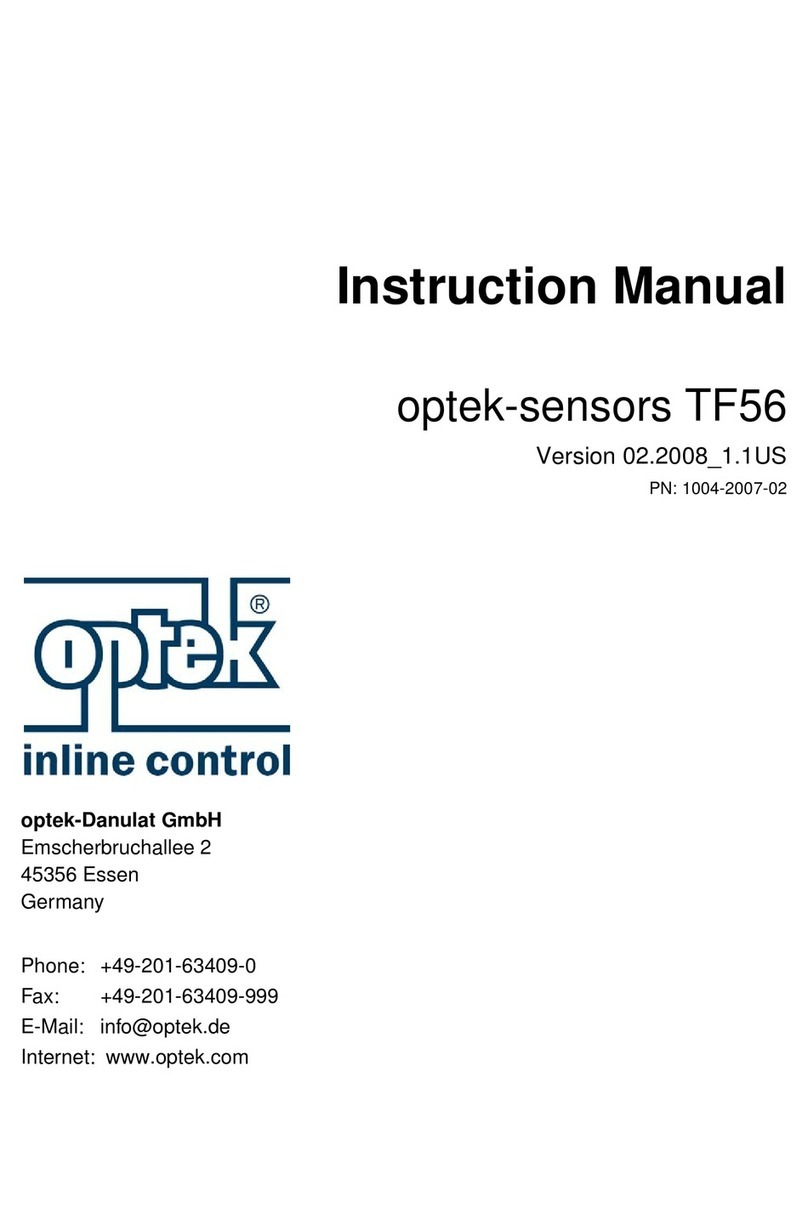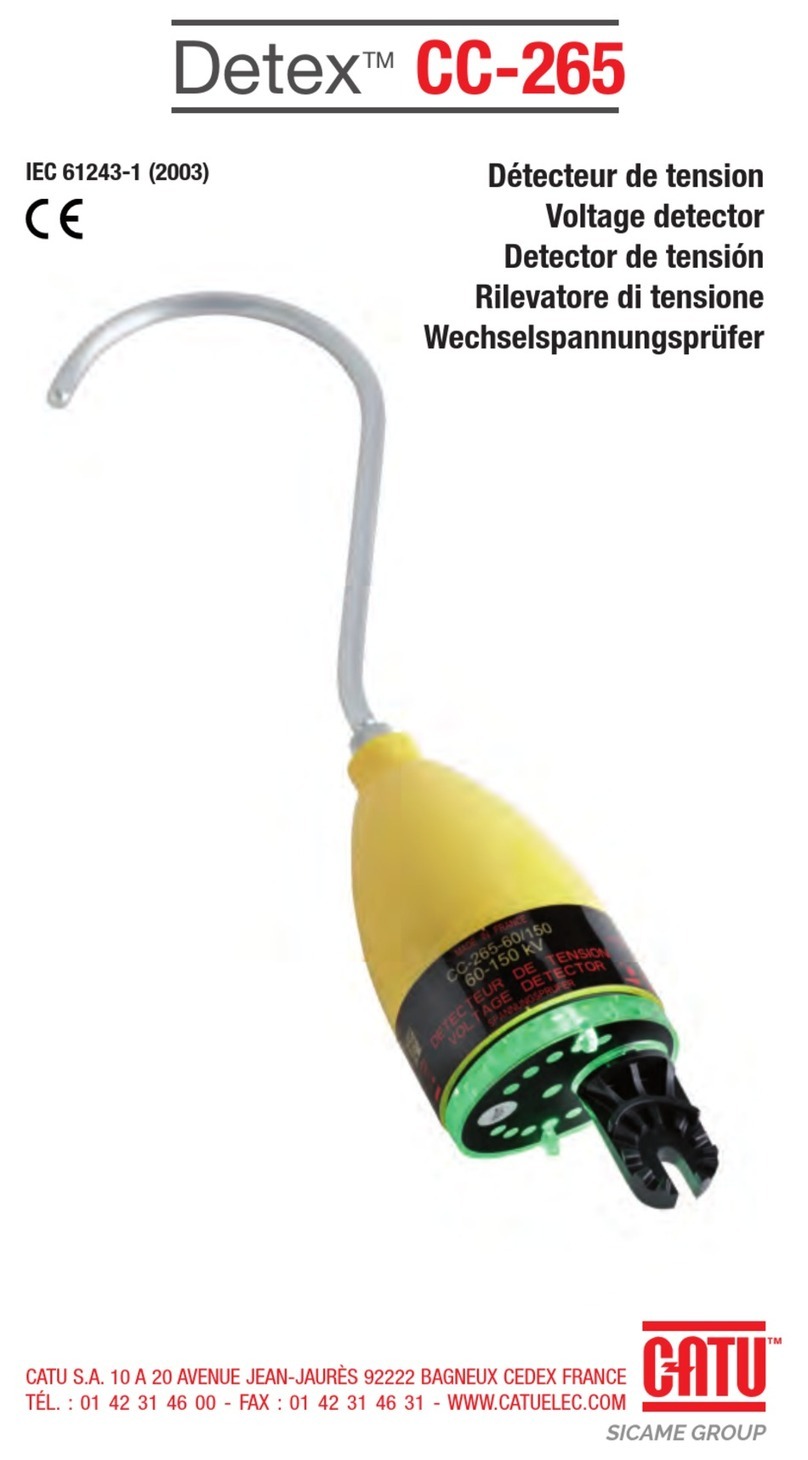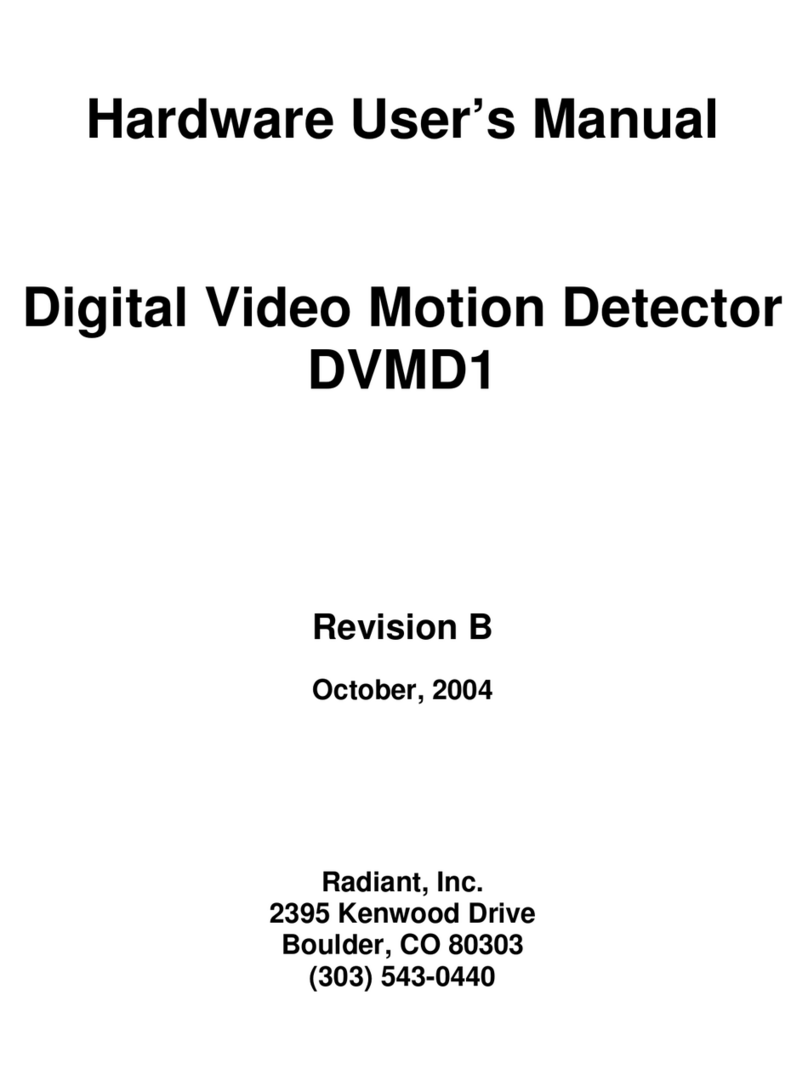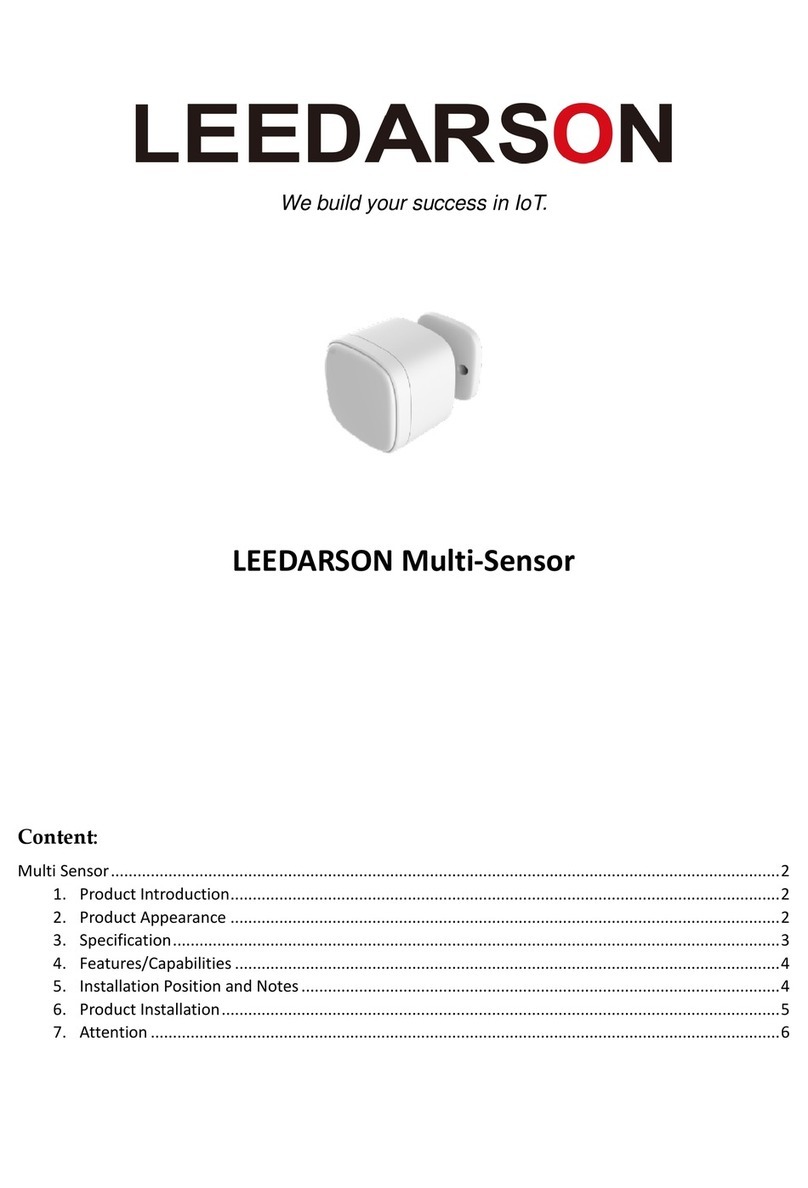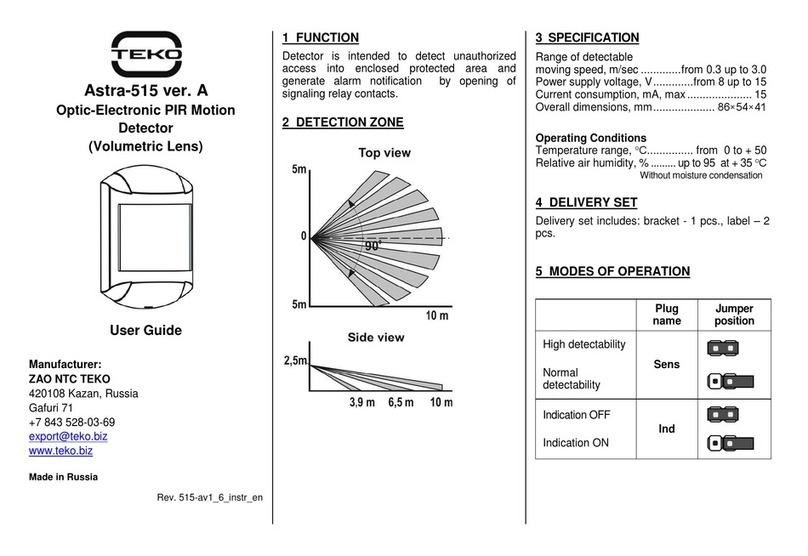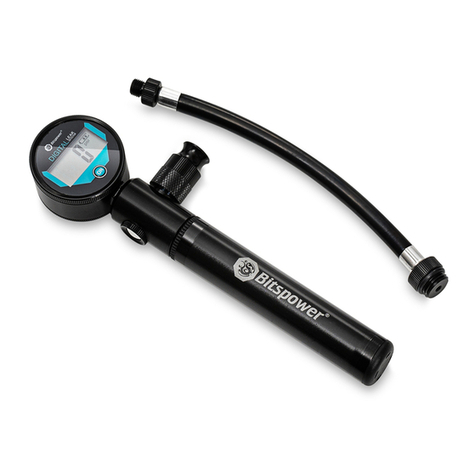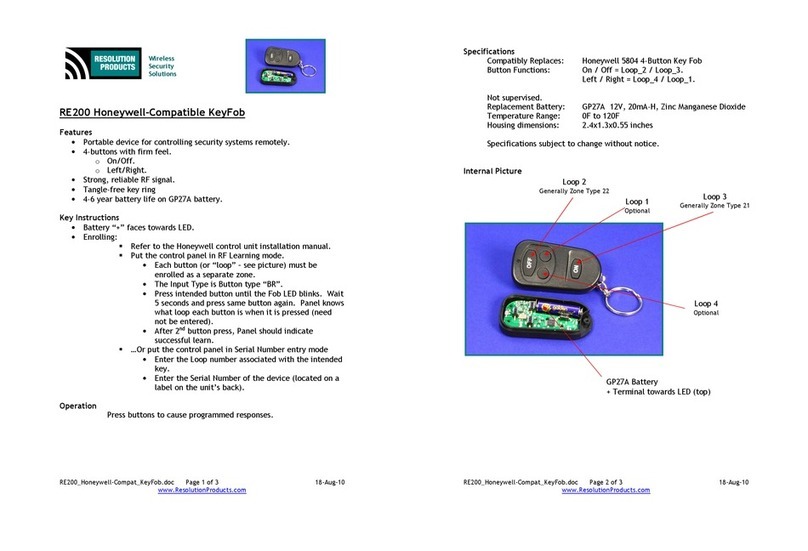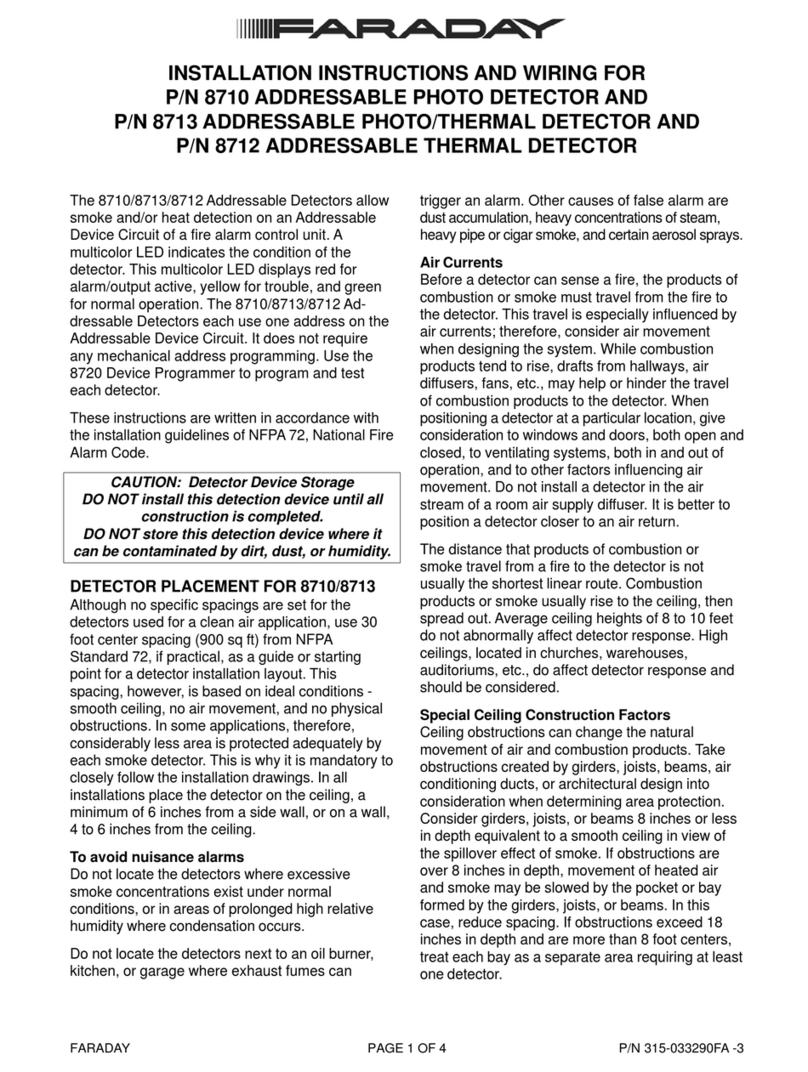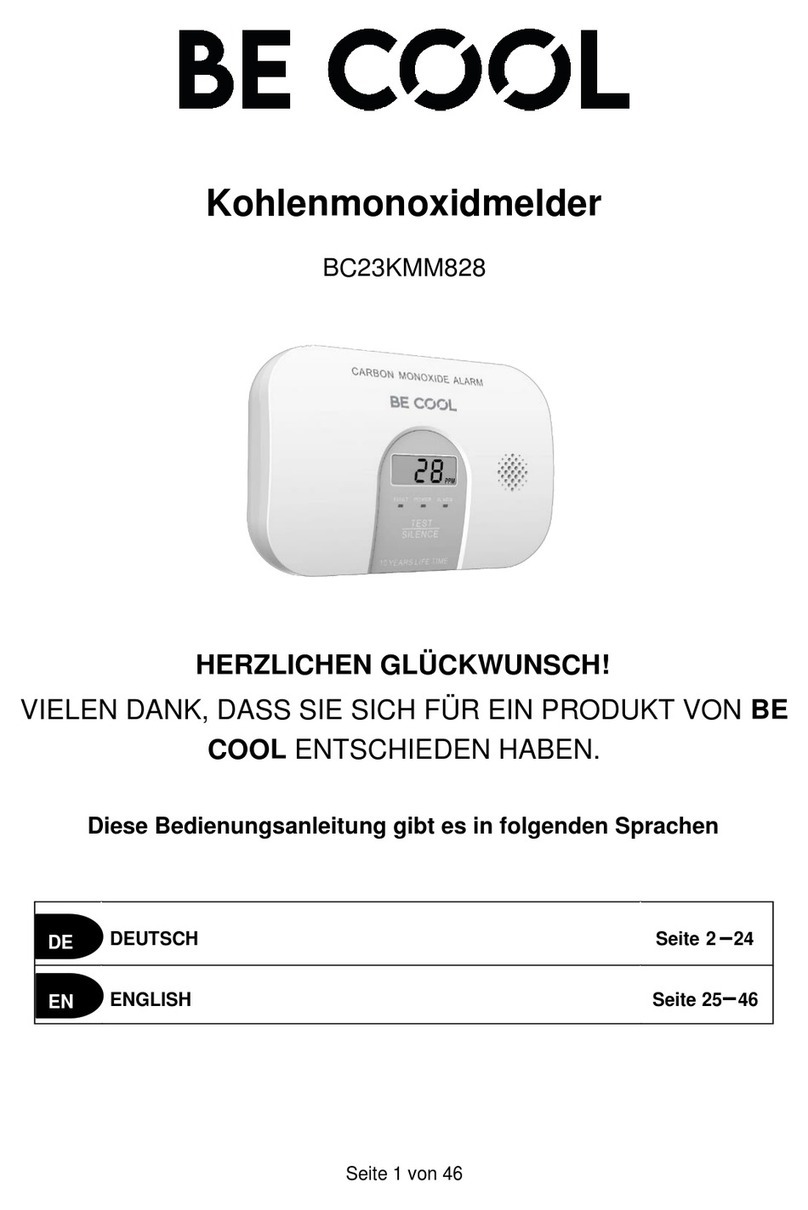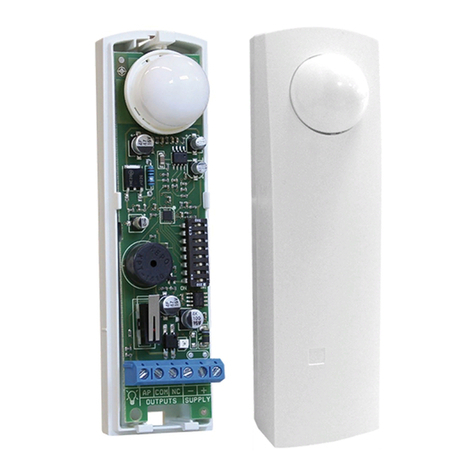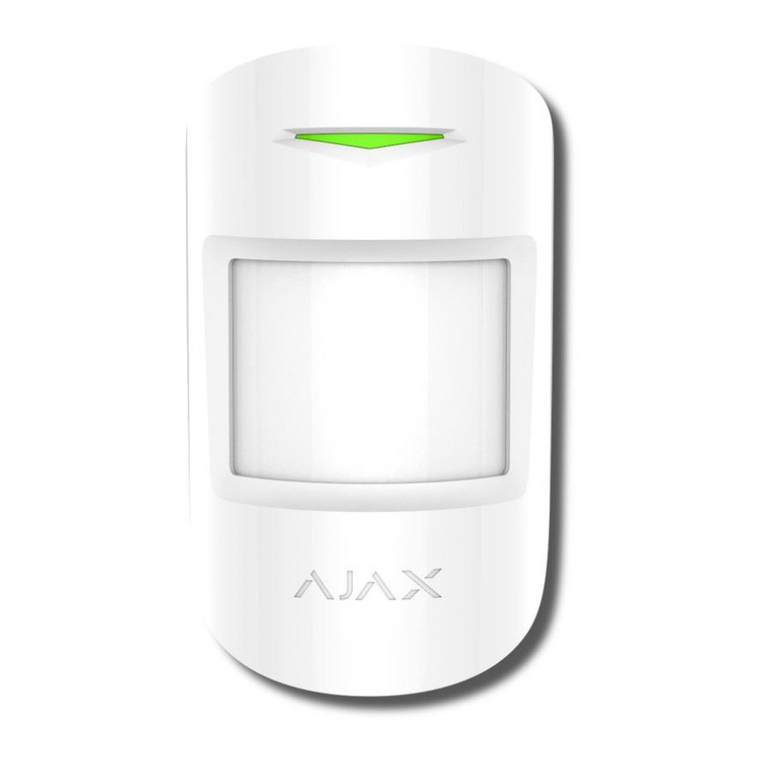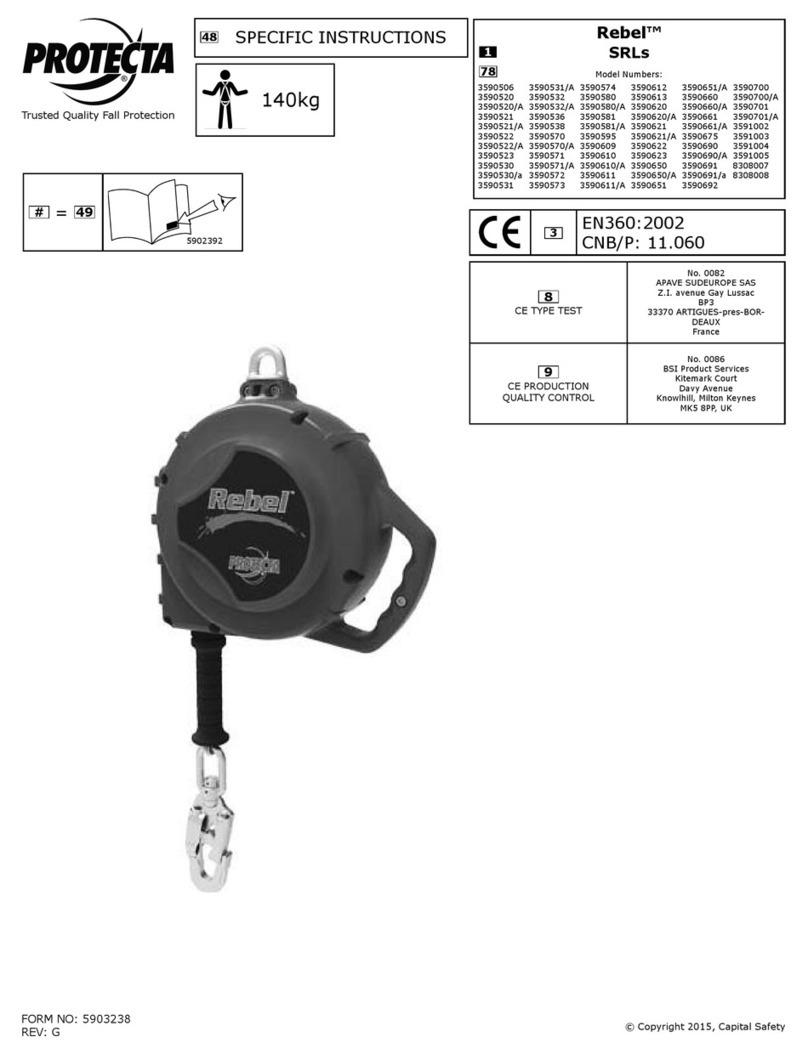Climax Technology ACGS-23 User manual

Acoustic Glass Break Detector (ACGS-23)
The Glass Break Detector detects the high frequency sound emitted by glass breakage and transmits signal
to notify the alarm system control panel when it is triggered.
Parts Identification
1. Green LED Indicator (Inside)
2. Red Indicator (Inside)
3. Microphone
4. Dip Switch
5. Battery Compartment
6. Learn / Test Button
-Press the button once to send a learn code.
7. Tamper Switch
-The tamper switch is compressed against the back cover and protects the Detector from cover
opening or removal from mounted location
8. Breakaway Area
The Breakaway Area has 2 knockouts where plastic is thinner for screw mounting. When the Detector
is forcibly removed from mounting location, the Break Away area will detach and allow tamper switch
to be activated.
LED Indicator
The LED indicators are inside the front cover and only visible when activated.
Red LED: The Red LED activates when:
Tamper Switch is activated.
Learn/Test button is pressed.
Glass break detected under Test Mode, Low Battery or Tamper open condition
(The Red LED does not light up when glass break is detected during normal operation)
Green LED
The Green LED activates when glass break is detected under Test mode.
Getting Started
1 Insert the battery to power on the device.
2 Put the Control Panel into learning mode, refer to panel manual for detail.
3 Press the Learn/Test button once to transmit learn code to panel.
4 Refer to panel manual to complete learning process.
5 Refer to panel manual to complete the learning process.
Sensitivity Adjustment
The Glass Break Detector sensitivity can be adjusted using the two dip switches. Adjust the sensitivity
to change detector range.

Sensitivity Dip Switch 1 Dip Switch 2 Detection Range
Maximum OFF OFF 8m
Medium OFF ON 5m
Low ON OFF 3m
Minimum ON ON 1.5m
Test Mode
The Test mode is used to help check the Glass Break Detector’s detection distance. When the
Learn/Test button is pressed, the Glass Break Detector will enter Test mode for 5 minutes. Pressing the
button again during the 5-minute period will reset test mode time to 5 minutes.
During Test mode, both Red and Green LEDs will light up when glass break is detected.
Testing the Detector
The Detector should be tested to ensure it is able to detect glass breakage successfully. A FlexGuard
FG-701 Glassbreak Simulator is required to test the detection function.
1 Press Learn/Test button once to put Detector into Test mode for 5 minutes.
2 Set the FlexGuard FG-701 to “FLEX” and “TEST” mode.
3 Put FG-701 at desired testing location on the glass and point the speaker at the Detector. Close the
window covering if it is present.
4 Strike the glass with a cushioned tool to create a glass striking sound. When FG-701 detects the glass
striking sound, it will react by emitting glass break sound.
5 The Detector will only be activated if it detects both glass striking and glass break sounds. When
activated, both Green and Red LED will light up to indicate glass break has been detected.
Supervision Function
When the Glass Break Detector is in normal operation, it will transmit a supervision signal regularly
every 30~50 minutes.
Battery
The Glass Break Detector uses a 3V CR123A Lithium battery.
The Glass Break Detector can detect low battery voltage. When low battery voltage is detected, a low
battery signal will be sent to the Control Panel along with regular signal transmissions for the Control
Panel to display the status accordingly.
When changing battery, press the learn/test button a couple times to discharge after removing battery
before inserting a new one.
Glass Thickness
Plated Glass: 2.4 to 6.4 mm (3/32 to 1/4")
Tempered Glass: 2.4 to 6.4 mm (3/32 to 1/4")
Wired Glass: 3.2 to 6.4 mm (1/8 to 1/4")
Laminated Glass 3.2 to 6.4 mm (1/8" to 1/4")
Installation
The Glass Break Detector should be mounted on ceiling or wall. There should be no obstacle between
the Detector and the window protected. The Detector back cover has mounting knockouts which can
be broken for screw mounting. Alternatively, you may also mount the detector with double side
adhesive tape provided.
Mounting Location:
Mount away from sound source, such as speaker, air condition or motor.
Mount with as much distance from window or door as possible to avoid external sound interference.
Screw Mounting
1 Break through the knockouts on back cover and use them as template to mark position on wall/ceiling.
2 Drill holes at marked location and screw the back cover onto the wall/ceiling, insert wall plug if needed.

3 Replace the Detector main body onto the back cover. Make sure the cover is properly closed and the
device is fixed to the wall tightly.
Adhesive Tape Mounting
When using provided double side adhesive tape, make sure to install the detector on flat surface. Do not I
install on uneven surface or location with cracking paints.
1 Clean both the detector back cover and mounting location with suitable degreaser.
2 Apply the double side adhesive tape to back cover of detector, then apply to mounting location.
<NOTE>
When mounting with double side adhesive tape, the tamper protection for mounting location
removal will be disabled. Protection from cover opening is still available.

Federal Communication Commission Interference Statement
This equipment has been tested and found to comply with the limits for a Class B digital device,
pursuant to Part 15 of the FCC Rules. These limits are designed to provide reasonable protection
against harmful interference in a residential installation.
This equipment generates, uses and can radiate radio frequency energy and, if not installed and used in
accordance with the instructions, may cause harmful interference to radio communications. However,
there is no guarantee that interference will not occur in a particular installation. If this equipment does
cause harmful interference to radio or television reception, which can be determined by turning the
equipment off and on, the user is encouraged to try to correct the interference by one of the following
measures:
. Reorient or relocate the receiving antenna.
. Increase the separation between the equipment and receiver.
. Connect the equipment into an outlet on a circuit different from that to which the receiver is
connected.
. Consult the dealer or an experienced radio/TV technician for help.
FCC Caution: To assure continued compliance, any changes or modifications not expressly approved
by the party responsible for compliance could void the user's authority to operate this equipment.
(Example - use only shielded interface cables when connecting to computer or peripheral devices).
FCC Radiation Exposure Statement
This equipment complies with FCC RF radiation exposure limits set forth for an uncontrolled
environment. This equipment should be installed and operated with a minimum distance of 20
centimeters between the radiator and your body.
This transmitter must not be co-located or operating in conjunction with any other antenna or
transmitter.
The antennas used for this transmitter must be installed to provide a separation distance of at least 20
cm from all persons and must not be co-located or operating in conjunction with any other antenna or
transmitter.
This device complies with Part 15 of the FCC Rules. Operation is subject to the following two
conditions:
(1) This device may not cause harmful interference, and
(2) This device must acceptanyinterference received, including interference that may cause
undesired operation.
Table of contents
Other Climax Technology Security Sensor manuals



